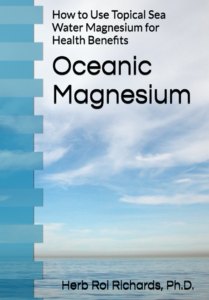You hear it in the media, and your doctor says you need calcium in your bones. The resounding vibration and volume increase as you age, with the threat of osteoporosis, the dreaded brittle bone disease.
Getting calcium to the bones would remedy the decline of bone structure but not their strength. For bone strength, you must have magnesium chloride. Magnesium hardens the bones and keeps them from crumbling under stress, such as a fall. Even with as much supplementation as a person can do, getting the calcium to the targeted areas seems to be a problem.
If you’re retirement age or older, you can take a whole jar of calcium, and very little, if any, will make it to your bones. It’s as if Mother Nature has turned her back on you; if she is done with you and you have no procreative use for her anymore, she’s content with letting your body shut down, making resources available for someone new. Mother Nature’s a ruthless bitch, and she sees human longevity as a pain in the ass and a wasted resource.
So, where does the calcium go?
It turns out that what actually happens in the human body when you supplement calcium is exactly the opposite of what you want. If you were to track the calcium, it would overwhelm the cells and cause them to fail. Calcium is actually toxic to human cells and breaks them down without magnesium, which keeps calcium healthy.
Even your doctor doesn’t realize that calcium supplementation is a leading cause of increased heart disease, cancer, arthritis, dementia, and premature death.
There’s no doubt that calcium is required for good bone health, but getting it there is not done by any oral delivery system; in fact, supplementing in this way is actually dangerous to the human condition.
New science is giving us clues that appear counterintuitive based on what we have heard in the past. Most human bodies do not require calcium supplementation, even the aging ones; they need a mechanism that promotes the use and delivery of the already existing calcium.
It just so happens that an inexpensive mineral does just that when combined with calcium. It would be far more beneficial healthfully to cease calcium supplementation and massively increase magnesium supplementation.
And I’m not talking about oral magnesium supplements, which are mostly ineffective. At best, the human body absorbs less than ten percent of oral magnesium supplements.
I’m not knocking oral supplementation completely, as a little magnesium in your stomach is better than nothing, but to get it into your bloodstream and the cells that need it desperately to excite the regenerative capabilities of the calcium already existing just through a normal diet, you must go transdermal (through the skin) with your magnesium supplementation.
That means finding a good source of magnesium from the ocean and rubbing it onto your body’s skin. This is the same seawater magnesium that was used to replace blood for transfusion when there was no blood to be had in wartime.
This magnesium is a perfect match for human biology. When applied topically through the skin, the protective skin layers that prevent exposure to potentially dangerous substances relax and allow this essential nutrient to pass through unrestricted.
Your body knows this substance, recognizes its need for it, and absorbs it as it passes through the tissue and into the bloodstream, where it is longing for its arrival.
Once inside the cell housing potentially lethal calcium, magnesium bonds with the calcium, and as if by magic, the calcium not only becomes non-toxic but can be used by the body and can now find its way into the bones. There, magnesium is longed for and embraced because it is what hardens the bones so they will not crumble under stress.
As the science about the relationship between calcium and magnesium becomes more apparent, vitamin manufacturers have leapt ahead to salvage their calcium sales by creating complex formulas combining calcium with magnesium without doing the math. Very little oral magnesium is absorbed (less than 10%), while up to 90% can be absorbed through the skin.
Calcium sales aside, your body seldom lacks calcium; if it does, probably not much. However, your body is lacking magnesium. Your body can absorb enough magnesium through oral supplementation to supply the gut, which only gets less than ten percent of what you’re taking. However, to get the magnesium you need in your cells and the bloodstream, you must topically apply a generous serving of magnesium from the ocean.
It is necessary to rub what is usually called magnesium oil on the skin and absorb it to counter the wealth of extra calcium most people get in their daily diet so
Stop adding more potentially toxic calcium and start rubbing oceanic magnesium all over your body and harden those bones like they were years ago.
For more information, check out my new book on Oceanic Magnesium, which is coming soon to a bookstore near you.

